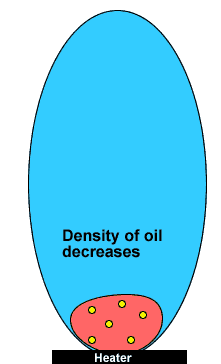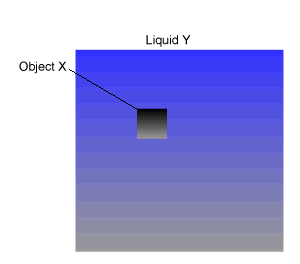The lava lamp shown on the right works by changes to the density of the oil inside the water.
Explain how these density
changes come about.
Compare the density of the oil and the water as the oil rises.


The densities of 5 liquid substances are shown below.
Substance "F" = 3.8
g/cm3
Substance "A" = 1.4 g/cm3
Substance "J" = 1.1 g/cm3
Substance "H" = 1.9 g/cm3
Substance
"K" = 4.2 g/cm3
Indicate True or False for each statement.
|
Statement
|
True
|
False |
|
Substance
"X" will float on a layer of substance "K"
|
||
| Substance "A" will float on a layer of substance "H" | ||
| 30cm3 of substance "K" will weigh 110 grams. | ||
| A sample of substance "J" weighs 8.8 grams and its volume is 8cm3 | ||
| 20cm3 of substance "F" is mixed with 20cm3 of substance "A" to give a 40cm3 solution with a density of 2.6g/cm3 |
Which has the greatest density 5kg of lead or 22 kg of aluminium?
The density of liquid "Y" is 16.0 g/cm3 An object, "X", of mass 4.0 g is placed in a container of liquid "Y", as shown on the right.
Can the volume of object "X" be determined? If so the volume of "X" in cm3 is
The mass of "X" is less when submerged in liquid "Y"
Object "X" is less dense than liquid "Y"
Ten cubic centimetres of "X" will weigh
